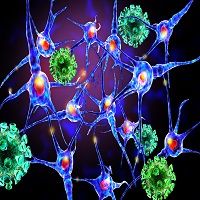Article
Iron Accumulation in Brain a Mysterious Sign in Multiple Sclerosis
Author(s):
Austrian researchers proved that iron builds up in the brain in patients with multiple sclerosis, but the significance of the change is unclear.

Temporal changes in iron concentration occur in the deep grey matter of the brains of patients with multiple sclerosis (MS) and clinically isolated syndrome (CIS), but in the short run they are not associated with changes in disability or disease activity, according to a study published by a group of Austrian scientists.
This longitudinal study looked at the amount of iron accumulated in the early stages of MS based on the hypothesis that this process might be different than in later stages, Michael Khalil MD, PhD of the Department of Neurology at the Medical University of Graz and his colleagues explained. Because the etiology and results of iron accumulation are still debated, “it is important to understand the evolution of iron accumulation over time,” they said.
The Austrian researchers took iron-sensitive brain scans of 68 patients with relapsing-remitting MS and 76 with CIS. (CIS is sometimes a pre-cursor of MS and involves a first, 24-hour episode cause by inflammation and demyelination in the central nervous system which create neurological symptoms, according to the National Multiple Sclerosis Society.) Approximately 57 % of the MS participants were female and 66% of the CIS subjects. MS occurs more frequently in women.
The baseline scans were then compared with scans from a follow-up period of a minimum of at least one year and a median of 2.9 years. The results varied, but did not show a correlation with disability, the authors reported. The authors noted that this finding did not confirm the results of an earlier, smaller study that reported physical disability was “strongly related” to changes in the amount of iron in some deep grey matter areas that were not included in the authors’ study.
In MS patients, the Austrians found the amount of iron in one part of the subjects’ brains, the basal ganglia, were “more pronounced” in the earlier stages of the disease and occurred independently of other brain changes. “This suggests iron accumulation to slow over time at least in some basal ganglia structures,” the study said.
The authors said the it is possible to speculate that “iron accumulation precedes more pronounced [brain] atrophy’, but that they could not confirm such an association. They added that “the underlying reason for the accumulation of iron within deep grey matter is unclear.”





